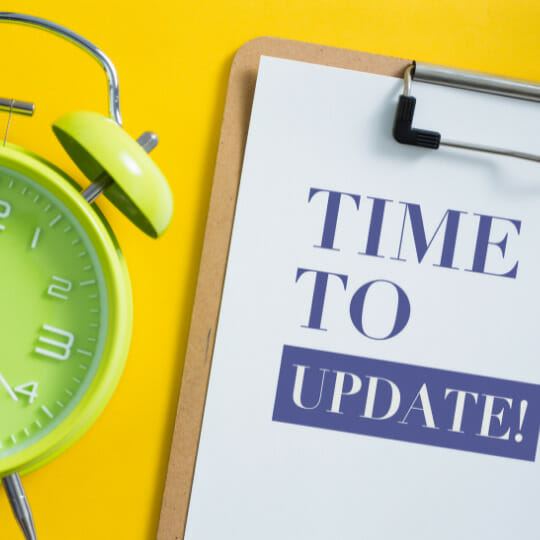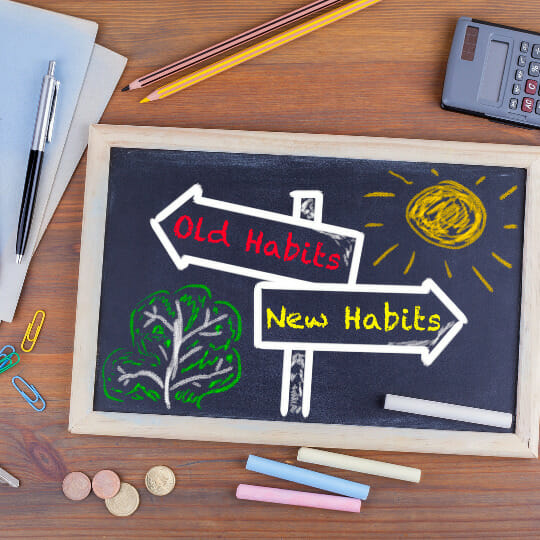
This is the latest update on my 50-day program. At around 25 days in, I want to share some of my results and key learnings so far.
I’ll also cover what I’ve learned about how habit forming is easier within a structure, but stickability is easier if you honour your more fluid circadian rhythm. This might explain to you why you have struggled to stick to programs in the past. I will also talk about a few solutions.
I can certainly say without a doubt that some of my key results after 25 days on this program have been very impressive and important for me personally.
In the last episode, I mentioned macro tweaking – I used the app My Fitness Pal for a couple of weeks to track my meals and workouts, so I could work out calories, fat, macro ratios and nutrients to see what works best for me in terms of energy, focus, cravings, satiety and productivity.
My fine-tuning has been impactful.
For starters, I know exactly which breakfast fuels me the best for energy, productivity, and focus in the morning.
I have a clear understanding of exactly what to eat at lunchtime to fuel an afternoon of even energy and without sugar cravings or hunger.
I am also very clear on the role that water plays in my mental focus, energy, and hunger, working synergistically with what I’m eating.
This is a great starting point for me because I am really clear on which types of meals to eat to optimise my mental and physical performance, so I don’t have to do any thinking work about that any more. I can plan my meals ahead prep them in advance and just enjoy them. No diet plan could ever have done this for me.
I am acutely aware of true hunger signals now. And I have noticed that when I get stressed, feel flustered, or feel rushed, that is when I am likely to want to eat chocolate. But I realise that it is a craving for chocolate and comfort food, rather than any need for food or energy. This has been a really important learning for me.
Now that I am in a really good place with my hydration and my eating, it means that I can notice these stress-related chocolate cravings when they come up, and I can sit with the urge, allow it, and let it go. I realise that if I did not have my hydration and eating in order, then I would probably give in to that chocolate craving. And that is what has been happening until this program.
My morning walks have happened on most days and they have been a great start to the day and precious quality time with my husband.
Otherwise, I have been sporadic with my afternoon exercise, and it seems to be related to my work schedule and energy levels.
I have a preferred time of day to exercise, which is in the afternoon. That’s when I feel strongest. The trouble is, that time often coincides with meetings.
In this program, I have managed to exercise better on days when I’m not teaching at night and when I don’t have late meetings. On those days, exercise ends up happening while I’m making dinner, which is not ideal. It means a shorter, less intense workout.

Also, if I have had a rushed or mentally busy day, I feel too drained to exercise in the afternoon.
Morning exercise doesn’t suit me, apart from walking.
I’m still grappling with this one. Stay tuned.
Through the process of analysing my progress and reflecting on what’s been going on, I have come to the conclusion that habit forming is really difficult for a lot of people because of the clash between our life schedules and our circadian rhythms.
I have had this same conversation with a client recently who is on her own program.
Let me explain what I mean.
We as humans living in society run our days via a fixed schedule. We set an alarm to get up in the morning, we have to be at work at a certain time and we have responsibilities outside of work that are also driven by the clock.
However, our bodies don’t run like that. Our bodies run on a circadian rhythm that changes through the year based on day length and temperature and a whole bunch of other environmental factors.
For example, we have certain times of day when we are more energised, and this is the best time to exercise and eat. However, your most energised time might happen in the middle of a board meeting!
What happens is that we end up exercising or eating at sub-optimal times for our personal rhythm. And that’s why it might be so hard for you to follow a particular exercise plan, or keep going to the gym at the same time each day for a whole year, or be able to eat the same food at the same time each day.
Our bodies change in response to the seasons and our stage of life, and our needs change.
What this means for you is that if you try to follow a set exercise program at the same time every day, or the same eating pattern with the same foods at the same times every day, the likelihood is that you fail at some point because your biology will shift you in a different direction and your needs will change.

In addition to this, habit formation is easier with some degree of consistency, so having a set day or time to perform a habit makes sense in theory, but perhaps not in practice.
I learned all this in my biology degree, in my metabolic typing advisor training, my personal training qualifications, my coaching certification, and through over 4,000 hours of coaching clients…. but I have only realised the gravity of this influence by doing my own 50-day program and experiencing this myself.
So how do we juggle habit formation and circadian rhythm when we have a fixed schedule for life?
I have a few ideas that i will sketch out now and flesh out in another episode.
Flexible work is one idea. Finding ways to adjust my start times, finish times, days off and/or meetings means I will more likely be able to honour and leverage my circadian rhythm.
Supplementing is something I’m currently doing and will continue. It makes a huge difference, and I know after using my fitness pal that it’s very difficult to meet all my nutrient needs, even with a good diet. I have been taking Usana supplements for 15 years because of their scientific backing, quality manufacturing process and proven efficacy.
Seasonal exercise is a no-brainer for me, and I have been doing this for years. In personal training, we talk about something called a periodised training program. This is when an athlete in a competitive sport breaks their year into segments where they do different types of training – their preparation phase, intense training phase competition phase and then the rest and recovery phase which is also called the off-season.
For me, it’s the day-to-day fitting in of exercise that is more of the challenge, which I’m working on.
Seasonal eating is also a no-brainer and I am a huge advocate. Research shows that eating in-season produce gives you more nutrient-rich food, and it’s also cheaper to buy in-season stuff because there is a glut!
So choice of food is not the issue for me, it’s more about fine-tuning my meals in each season so I can maintain energy and eliminate focus.
Reflection and planning are the last points I’ll make for now. All of the above are relevant, but to implement seasonal changes, you need to stand back from your busy life and take stock, then, plan each week or each day to fit in all of the health-giving activities you need to do.
Today I updated you on the midway results of my 50-day program.
I also discussed the importance of honouring your dynamic circadian rhythm so you can be consistent and motivated, and the challenges of doing this within a more fixed framework of creating habits, and managing daily schedules.
I offered some solutions in the form of seasonal eating and exercise, supplementing, aiming for flexibility in your work schedule, and the importance of reflection and planning to make seasonal adjustments.
This is what I’ll be focussing on for the remaining 25 days… and maybe into another 50-day cycle!
Stay tuned for the next episode!
Understanding who you are and what you need will allow your business to thrive! If you’re truly ready to break old habits and get out of the rut I encourage you to check out the Habitology membership.
Learn more here: